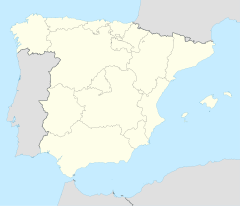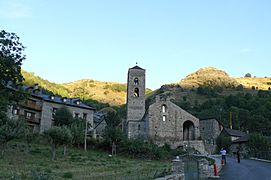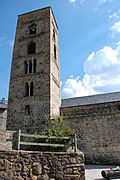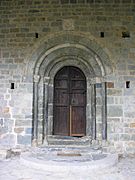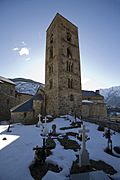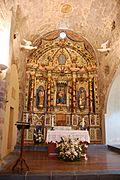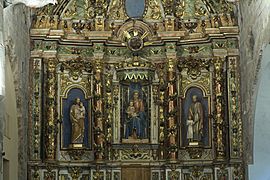La Nativitat de Durro facts for kids
Quick facts for kids La Nativitat de Durro |
|
|---|---|
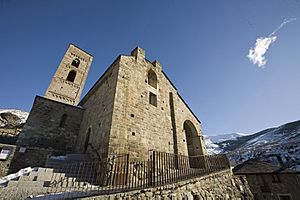 |
|
| Religion | |
| Affiliation | Roman Catholic |
| Location | |
| Location | Durro, Catalonia, Spain |
| Architecture | |
| Architectural type | Church |
| Architectural style | Romanesque |
| Official name: Catalan Romanesque Churches of the Vall de Boí | |
| Type | Cultural |
| Criteria | ii, iv |
| Designated | 2000 (24th session) |
| Reference no. | 988-007 |
| Region | Europe and North America |
La Nativitat de Durro is a beautiful old church located in the small village of Durro. This village is found in the Vall de Boí (Valley of Boí) in Catalonia, Spain. The church is named to honor the nativity of Mary, which means the birth of Mary. It's a very special building because it's part of a group of nine Catalan Romanesque Churches of the Vall de Boí that are recognized by UNESCO as a World Heritage Site. This means they are important historical places for everyone in the world to protect. The church became a World Heritage Site in the year 2000.
What the Church Looks Like
The Church of La Nativitat de Durro is built in the Romanesque style. This style was popular in Europe during the Middle Ages. Romanesque buildings often have thick walls, round arches, and strong, simple designs. The church has a tall, square bell tower. This tower is a common feature of churches in the Vall de Boí. The main entrance, or door, of the church is also built with Romanesque arches. You can see the church standing proudly in the village, with a cemetery nearby.
Inside the Church
When you go inside La Nativitat de Durro, one of the most important parts you'll see is the reredos. A reredos is a large, decorated screen or wall that stands behind the altar in a church. It often has carvings or paintings that tell religious stories. The reredos in this church is a beautiful example of art from its time. It helps to make the inside of the church feel very special and historical.
See also
 In Spanish: Iglesia de la Natividad de la Virgen (Durro) para niños
In Spanish: Iglesia de la Natividad de la Virgen (Durro) para niños


